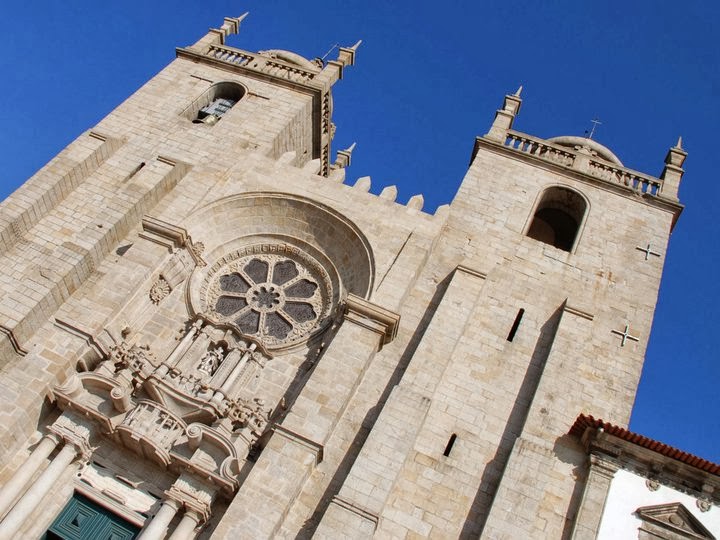Like many cities on the Iberian peninsula, Aveiro was established by the Romans, who called it Alavarium et Salinas (literally "a gathering place of birds and salt"). The name reflects the city's main industries of sea-fishing and salt-production, which have been connected to the region for centuries. Long after the Romans had gone, the name remained, evidence of which can be found in the 10th century will of Mumadona Dias, Countess of Portugal (r. 920-968), who bequeathed her lands in "Alavario et Salinas" to Guimarães Monastery.
In 1472, the town celebrated the arrival of Joana, Princess of Portugal (1452-1490), daughter of King Afonso V (r. 1438-1481). Having turned down marriage proposals from three heirs to different European thrones, Joana joined Mosteiro de Jesus (the Convent of Jesus) against her father's wishes. Three inexplicable events in her life, and even death, led to her beatification. First, a star shone brightly for several days before she arrived in Aveiro. Then, in 1490, all the flowers on the trees in the cloister wilted and fell off as her coffin went by. Finally, in 1626, when her tomb was opened, her body was found to be perfectly preserved. Now known as Santa Joana Princesa (Saint Joana the Princess), the anniversary of her death, 12th May, has become the Day of the City of Aveiro. On that day, a procession with an image of the Princess Saint and her relics (pieces of hair, a belt and some clothing), makes its way through the city.
 |
| The so-called "Venice of Portugal" |
Billed as being "the Venice of Portugal", I had high hopes for Aveiro. Truth be told, aside from a couple of canals and some gondola-like boats, known as barcos moliceiros, there is little to link the two cities. Nonetheless, the first impressions were good when I caught sight of an art installation in the form of silver-and-black life-size cow.
 |
| Modern art that appealed to me |
Outside, I was struck by the beauty of the station itself. Built between 1861 and 1864, the station is decorated with azulejos – blue-and-white tin-glazed ceramic tiles that were introduced into Iberia by the Moors.
 |
| The azulejo covered train station |
On leaving the tiled train station, I walked down Avenida de Doutor Lourenço Peixinho, swung a right and ended up at Canal do Côjo, from where it was a short walk to Praça Humberto Delgado and Canal Central. Lined with beautiful buildings, I would later get a moliceiro from here to take a trip along the city's waterways.
With their half-moon shape, high bow and large tillers, moliceiros look quite similar to Venetian gondolas. In fact, they are quite different from their Italian cousins. For a start, with a length of 15 metres (49 feet), moliceiros are longer than the 11-metre-long (36 foot) gondolas. They are also decorated with brighter colours and more inventive designs. Finally, their original function also differs. While gondolas have always been used for transportation, moliceiros were used to collect moliço (submerged aquatic vegetation), hence their name. Today, the moliceiros have been given a new lease of life are being used primarily for tourism.
 |
| The bridge at Praça Humberto Delgado, which separates the two canals |
 |
| Brightly coloured moliceiros |
 |
| Colourful prows of the moliceiros |
 |
| One of the many beautiful buildings |
 |
| Palm-lined walkway beside Canal Central |
Quite by chance I came across Mercado do Peixe (Fish Market). However, the closed market was of little interest to me, for behind it, something had caught my eye – a row of brightly-coloured houses on Cais dos Botirões reflected into the water. I was mesmerised, and to this day when I think of Aveiro, that's the image that comes to mind...
 |
| Picture perfect |
 |
| Houses on Cais dos Botirões, which links Canal de San Roque with Mercado do Peixe |
Having done some wandering and stopped off for lunch, I wanted to take a canal boat ride so I made my way back to Canal Central, bought a ticket for €5 (approx. £4/US$7) and climbed aboard. The 45-minute trip took me down Canal Central, into Canal das Pirâmides, under a bridge painted with seagulls, into Canal de San Roque then back again and onto Canal do Côjo.
 |
| Painted seagulls in flight |
 |
| The peaceful Canal de San Roque |
 |
| The wooden Ponte dos Carcavelos |
 |
| Still waters |
Even though I hadn't been to Venice when I visited Aveiro, I was a little dubious about "the Venice of Portugal" tag. Having since visited the former, I have to say that it really isn't possible to compare the two – Aveiro is nothing like Venice whatsoever. However, when taken on its own merits, Aveiro is a beautiful city and one that's well worth visiting.















































